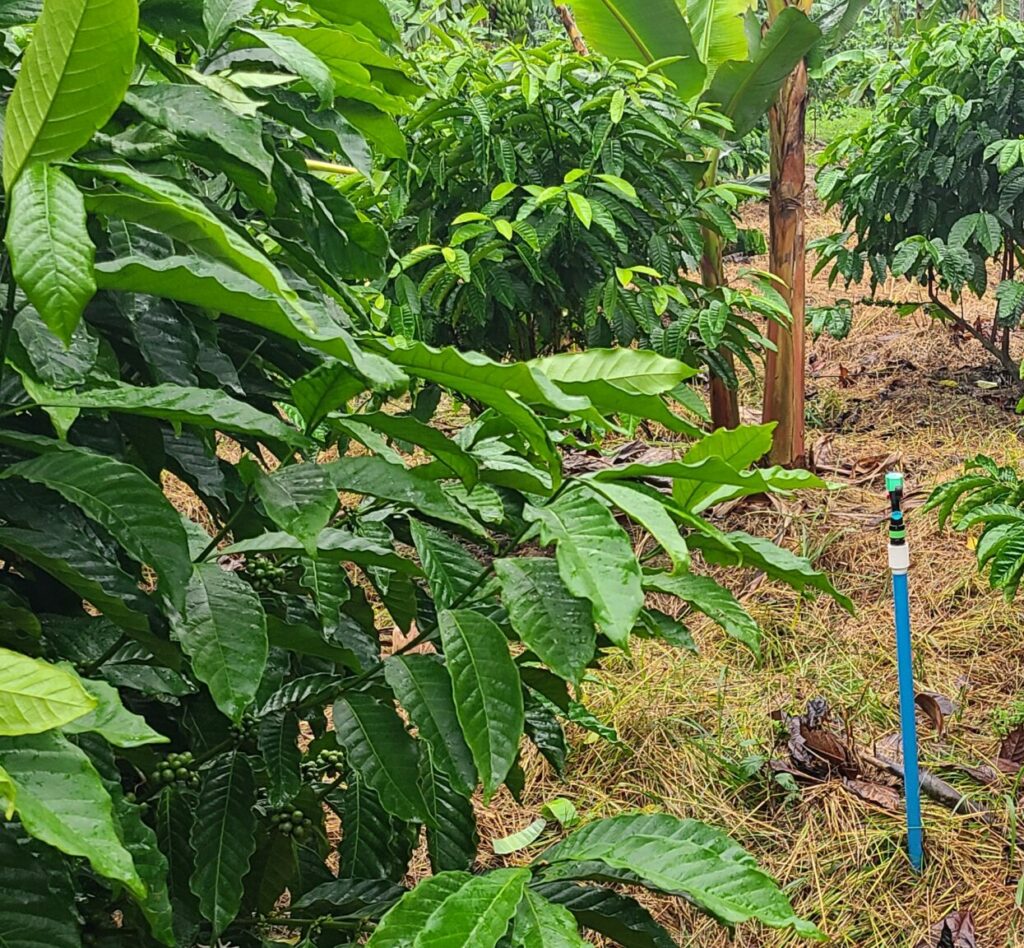CROPS
Coffee

Ntakye is currently growing coffee on a combined 15-acres, incorporating underground sprinkler systems for efficient irrigation and ensuring year-round growth and production. The primary variety, Coffea canephora (robusta coffee), is complemented by an experimented Kenyan variety, batian, a predominantly arabica variety with robusta ancestry resulting from a hybridization process involving SL28, SL34, Rume Sudan, N39, K7, SL4, and Timor hybrid varieties. The coffee is planted at 1,200 meters above sea level in the lakeshore basin in the central region of Uganda—below the recommended altitude for arabica and in predominantly clay soils—the thriving batian in our experimental fields raises questions about its potential as an alternative to climate-vulnerable arabica grown in the highlands.
Ntakye’s coffee cultivation incorporates shade provided by trees and banana plantain canopies and is indirectly nurtured by a desmodium cover crop—an innovative, symbiotic experiment aimed at enhancing coffee production. This approach utilizes desmodium, a nitrogen-fixing legume crop that enriches the soil with nitrogen and suppresses weeds.
Banana
Ntakye has dedicated three acres to cultivating cooking bananas, locally known as matooke. Additionally, we’ve allocated fifteen acres for the cultivation of a sweet banana variety called gonja, which is intercropped with coffee. Currently, our produce is collected at the farm gate by a local distributor. However, we are exploring strategies to directly supply bananas to exporters to ensure a higher market price for our produce.
Gonja is commonly roasted or deep-fried as it begins to ripen. Despite Uganda being a significant banana grower in Africa, the country still imports a substantial amount of gonja from the Democratic Republic of Congo, accounting for an estimated 60% of the annual supply. At Ntakye, we have planted two varieties of gonja – one sourced from an agricultural research station (namulonge), possessing greater resilience to diseases, and the other expanded over a six-year period from just three original suckers obtained from Yambio County, in southwestern South Sudan, near the border with the Democratic Republic of Congo. The second variety, characterized by longer fingers, naturally thrives in the dense forest landscapes of the Congo. Many of our customers attest to its excellent taste, making it a preferred choice among those who have tried it.

